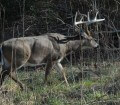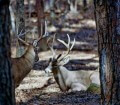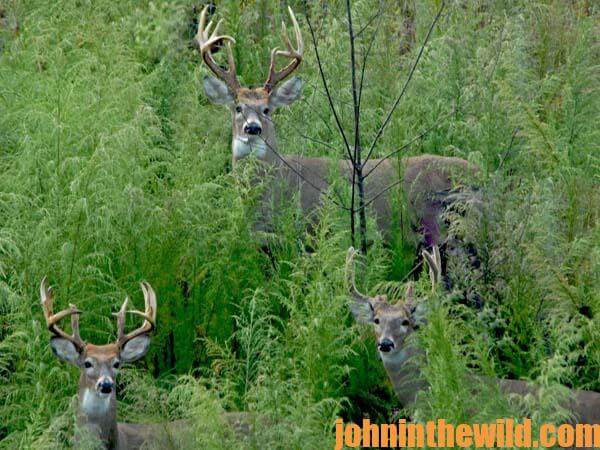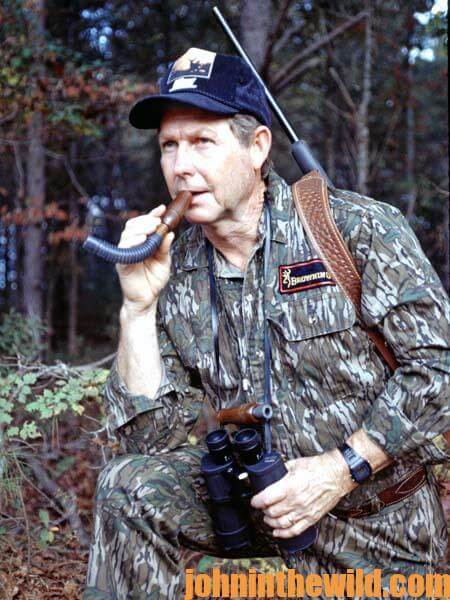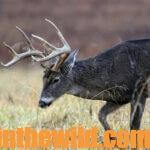John’s Note: How do you hunt the bucks that do all their moving and feeding at night? The problem is tough – but not impossible! Ronnie Groom of Panama City, Florida, has been an avid deer hunter for more than 4 decades and is considered an authority on deer, teaching deer seminars at various hunting lodges.
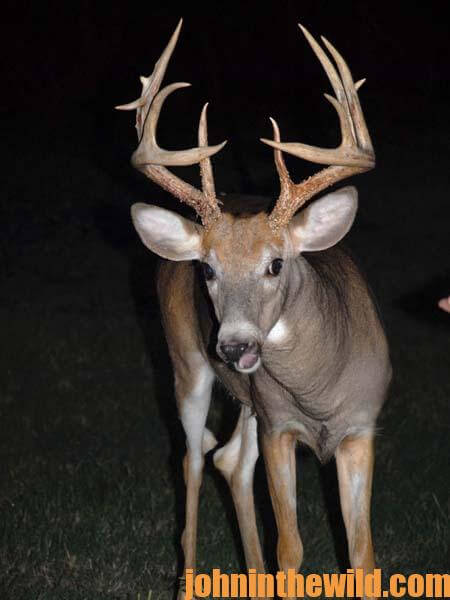 I believe the term, “nocturnal,” is inappropriate when used in reference to deer. When hunters talk about deer being nocturnal, the deer may not feed or move during daylight hours where the sportsmen are in the woods, but the deer are feeding and moving somewhere. Deer never stay in their beds for 12 to 15 hours at a time. They get up, they move around, and they eat. They just don’t conduct these activities where the hunters are during daylight hours where there’s heavy hunter pressure.
I believe the term, “nocturnal,” is inappropriate when used in reference to deer. When hunters talk about deer being nocturnal, the deer may not feed or move during daylight hours where the sportsmen are in the woods, but the deer are feeding and moving somewhere. Deer never stay in their beds for 12 to 15 hours at a time. They get up, they move around, and they eat. They just don’t conduct these activities where the hunters are during daylight hours where there’s heavy hunter pressure.
However, the deer may travel into these regions where hunters have been after dark. Therefore, when the hunter sees the deer’s tracks and signs of feeding and/or rubbing, he realizes that the deer are utilizing this area only at night. So, he probably will deduce that the deer have become nocturnal. Actually the deer are nocturnal in using the land where the hunter is, but they’re not totally nocturnal and must be somewhere in the daytime.
Let’s look at what causes deer to be nocturnal in a region – mainly you do – you and the other hunters like you who wander through the forests leaving your scent all over the ground and spooking the deer. Now we’re ready to look for a place where the whitetails are not nocturnal. The hard part is to find a spot where the deer are moving and not foul that area up with human scent, so that you run the deer off from this region also. You’re looking for a deer sanctuary. Most of the time when a hunter locates a site like this, he will run the deer out of the sanctuary. Then he won’t be able to hunt this particular place until the next season.
I use aerial photos of the property I’m hunting to locate big buck sanctuaries. We must remember that probably there will not be a great deal of sign leading to or away from these hideouts. When hunting pressure is high, the dumb bucks die early in the season. Only the older, smarter bucks have learned to feed at night in open places and hole up in the daytime in sanctuaries. And you may not see very many, if any, deer. More than likely, you’re hunting one individual deer or two or three bucks at the most in a sanctuary. Sanctuaries generally occur in spots with no hunting pressure. A sanctuary can be a small island in the middle of a woods pond, a small patch of grass or weeds in a field, a briar-thicket right behind a farmhouse or a big thicket 1-1/2-miles away from the closest hunter and far from the traveled roads.
Remember that hunters cause deer to be nocturnal. Therefore deer will move during daylight hours where the hunters aren’t. The problem with hunting these secret places is that if you go in, travel around in them and then try and hunt in these regions, you’ll spook the deer. Then the bucks will move to another place. So to take bucks when they’re nocturnal, first discover where they’re holding in the daytime, and hunt these regions very little.
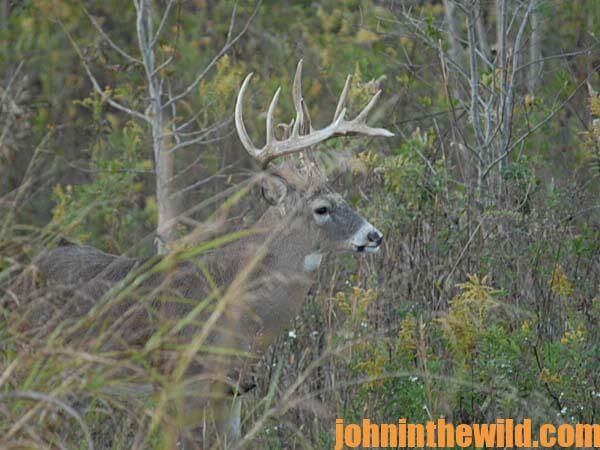 To get John E. Phillips’ Kindle eBooks and print books on hunting deer, “How to Hunt and Take Big Buck Deer on Small Properties,” “How to Hunt Deer Up Close: With Bows, Rifles, Muzzleloaders and Crossbows,” “PhD Whitetails: How to Hunt and Take the Smartest Deer on Any Property,” “How to Take Monster Bucks,” “How to Hunt Deer Like a Pro,” and “Bowhunting Deer: Mossy Oak Pros Know Bucks and Bows,” or to prepare venison, “Deer & Fixings,” click here.
To get John E. Phillips’ Kindle eBooks and print books on hunting deer, “How to Hunt and Take Big Buck Deer on Small Properties,” “How to Hunt Deer Up Close: With Bows, Rifles, Muzzleloaders and Crossbows,” “PhD Whitetails: How to Hunt and Take the Smartest Deer on Any Property,” “How to Take Monster Bucks,” “How to Hunt Deer Like a Pro,” and “Bowhunting Deer: Mossy Oak Pros Know Bucks and Bows,” or to prepare venison, “Deer & Fixings,” click here.
For information on making jerky from your deer to provide a protein-rich snack, you can download a free book from https://johninthewild.com/free-books.

